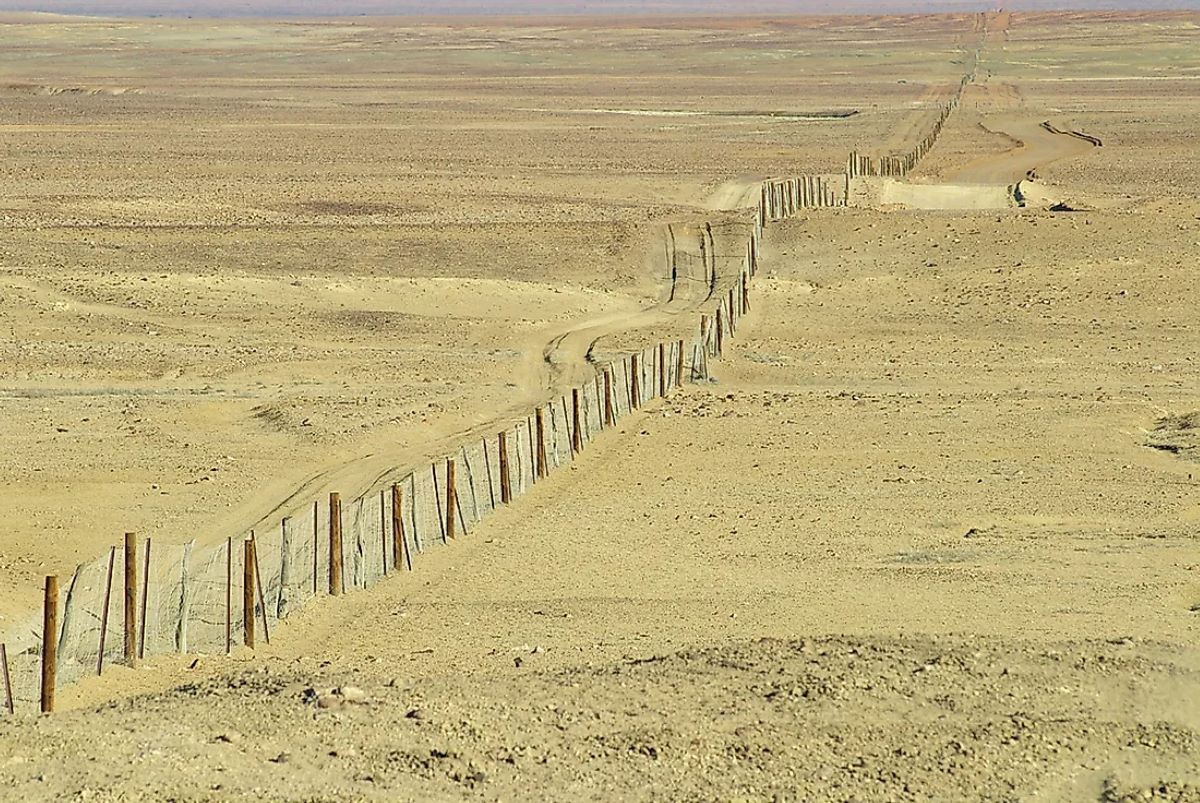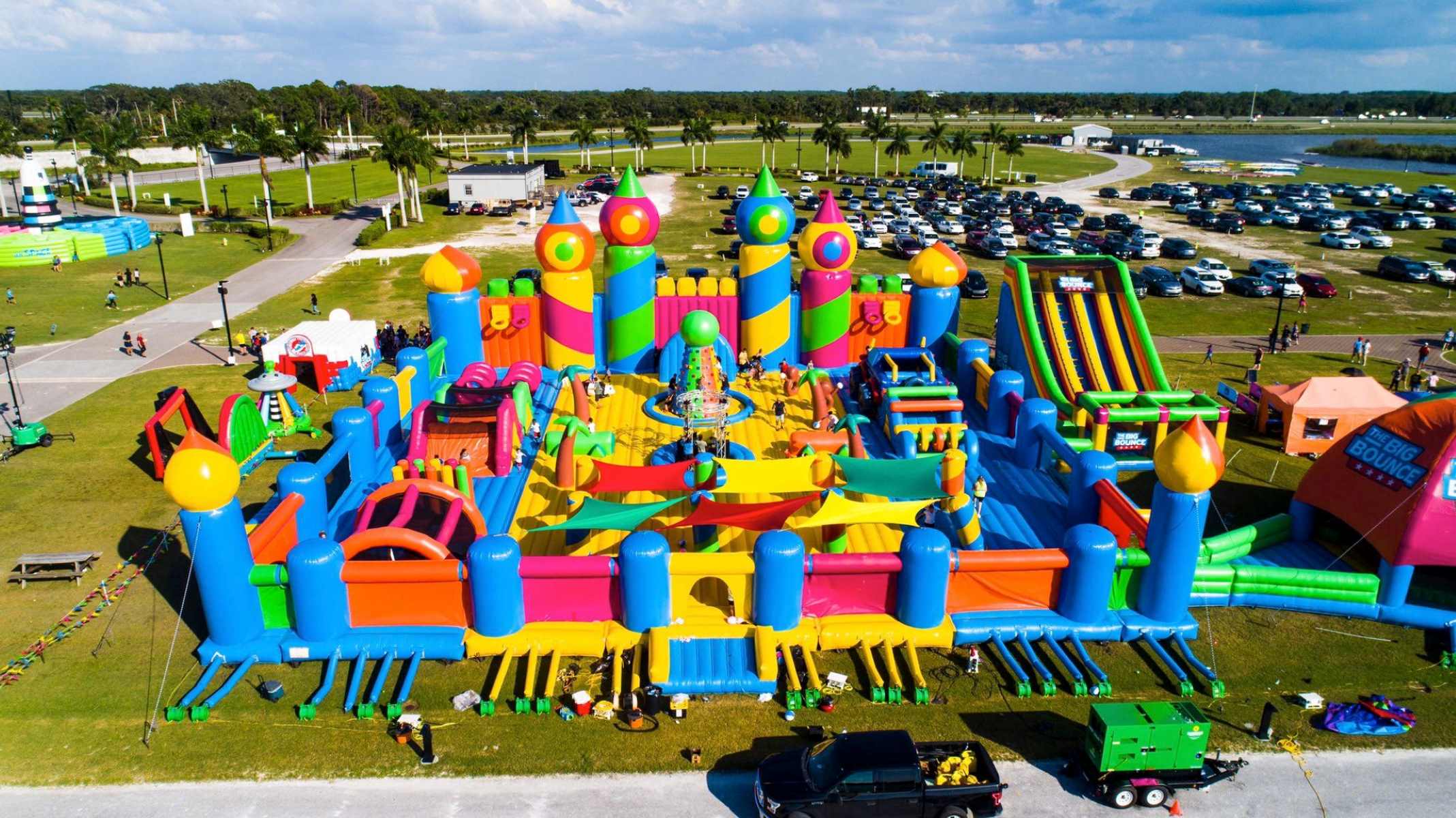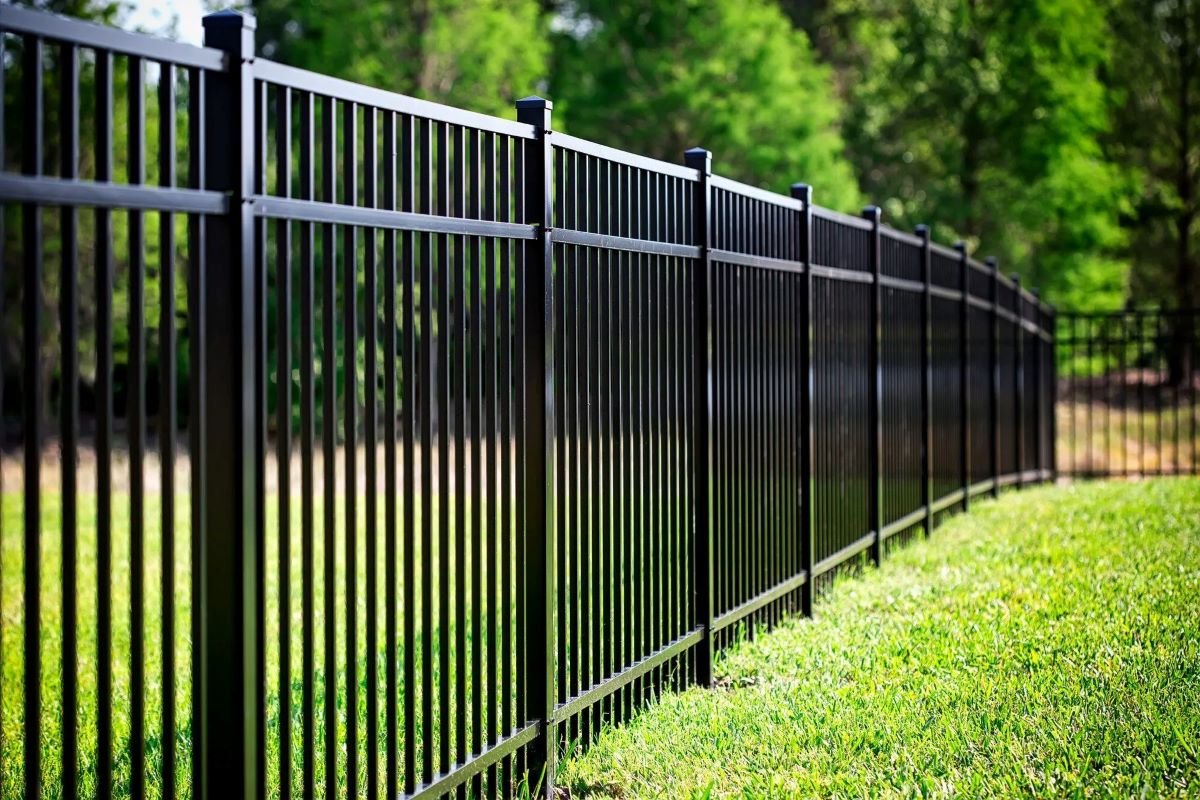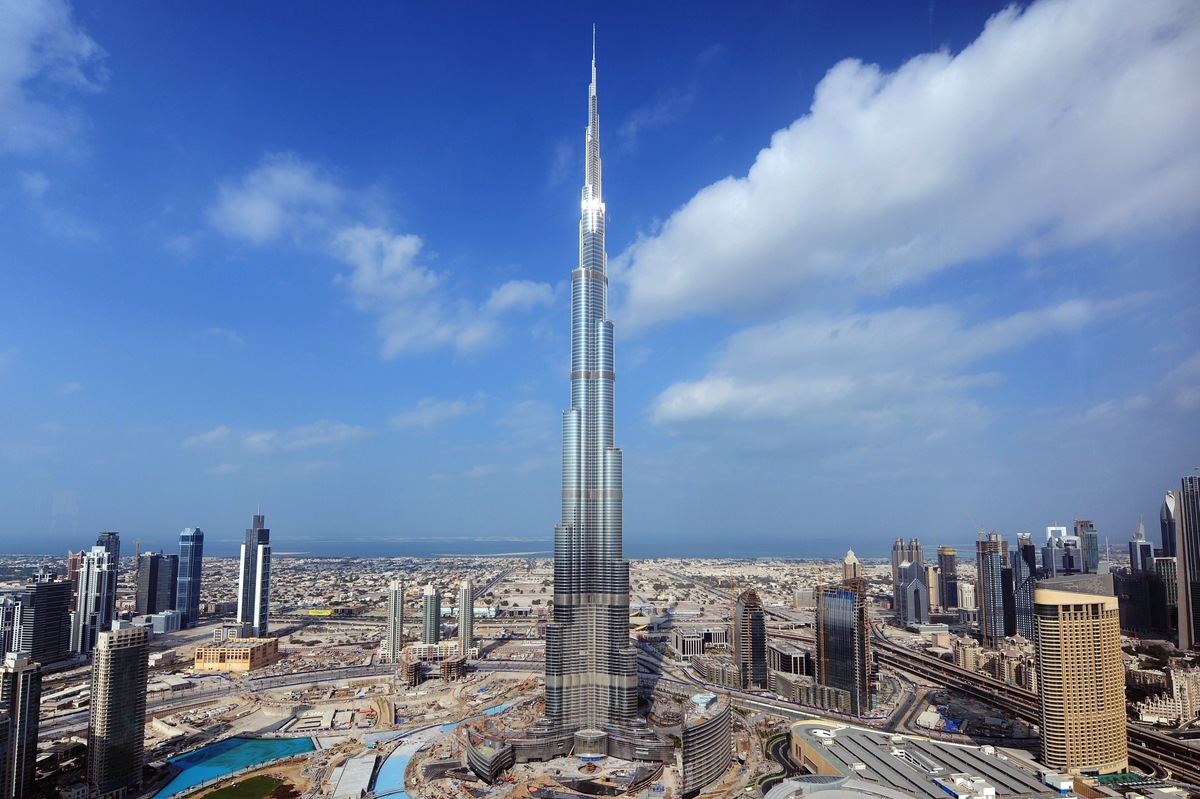

Articles
Where Is The Longest Fence In The World
Modified: December 7, 2023
Discover fascinating articles about the longest fence in the world and learn where it is located. Explore the history and significance of this remarkable structure.
(Many of the links in this article redirect to a specific reviewed product. Your purchase of these products through affiliate links helps to generate commission for Storables.com, at no extra cost. Learn more)
Introduction
The concept of fences has been deeply rooted in human history, serving various purposes such as marking boundaries, providing security, and safeguarding valuable possessions. However, some fences extend far beyond the traditional notion of a property boundary. One such remarkable fence, known as the “Longest Fence in the World,” stretches across vast landscapes and holds its own place in history.
The Longest Fence in the World is an impressive structure that covers thousands of kilometers and traverses diverse terrains. Its construction and purpose have fascinated both locals and travelers alike. In this article, we will delve into the intriguing history, construction, purpose, maintenance, notable sections, impact, and controversies surrounding this extraordinary fence.
Hold onto your hats as we embark on a journey to uncover the secrets of the Longest Fence in the World.
Key Takeaways:
- The Longest Fence in the World, originally built to protect livestock, now serves multiple purposes including wildlife management, cultural demarcation, and tourism, leaving an indelible mark on Australia’s landscapes and communities.
- While the Longest Fence in the World has faced challenges and controversies, its future holds opportunities for ecological balance, technological advancements, collaborative management, and preservation of historical and cultural heritage, ensuring its enduring legacy.
Read more: Where Is The World’s Largest Outdoor Mural?
History of the Longest Fence
The history of the Longest Fence in the World dates back to the late 19th century when the idea was conceived as a solution to a specific problem. It originated in a region known for its vast landscapes, unpredictable climate, and unique wildlife interactions.
Originally named the “Dingo Fence,” the construction began in the early 1880s in Australia. The primary purpose was to create a barrier to protect valuable livestock, particularly sheep, from dingo attacks. The sheer length of the fence was unprecedented, as it aimed to cover vast stretches of land to safeguard the livelihoods of farmers and graziers in the region.
The construction of the fence was a monumental undertaking that required meticulous planning and collaboration between various stakeholders. The initial 810-kilometer stretch was completed in 1885, spanning from Jimbour in Queensland to the Darling Downs. As the effectiveness of the fence in protecting livestock was evident, its extension became necessary.
Over the years, the fence expanded steadily, reaching a length of more than 5,600 kilometers. It wound its way through different states, including Queensland, New South Wales, and South Australia, forming the backbone of the Longest Fence in the World.
While originally built to combat dingo attacks, the fence has also played a significant role in minimizing the spread of other animal pests, such as kangaroos and wild dogs. Its presence has proved crucial in protecting fragile ecosystems and preserving the biodiversity of the region.
With its rich history and pivotal role in the Australian agricultural landscape, the Longest Fence in the World stands as a testament to human ingenuity and perseverance. It symbolizes the ongoing struggle to coexist harmoniously with nature while safeguarding livelihoods and the delicate balance of ecosystems.
Construction of the Fence
The construction of the Longest Fence in the World was a colossal endeavor that required meticulous planning, labor, and resources. The diverse terrains it traverses presented numerous challenges that had to be overcome during the construction process.
The fence was primarily constructed using a combination of materials such as wire mesh, wooden posts, and steel wires. The choice of materials ensured durability and withstood the harsh climate and wildlife pressures it would face. The fence was designed to be tall enough to prevent dingoes and other animals from jumping over it.
Teams of skilled workers were deployed to carry out the physically demanding task of erecting the fence. They faced numerous challenges, including penetrating rocky terrains, densely vegetated areas, and remote locations. The construction process involved digging holes for the posts, securing the mesh panels and wires, and reinforcing critical sections prone to potential breach.
The logistics behind the construction were immense. Materials had to be transported over vast distances, often by horse-drawn carriages or trucks, to reach the construction sites. The teams battled extreme weather conditions, scorching heat, dust storms, and torrential rains, to ensure the fence was built to withstand the test of time.
The construction of the Longest Fence in the World spanned several decades, with sections completed in different timeframes depending on the availability of resources and funding. Continuous maintenance and repairs were carried out to sustain the integrity of the fence and address any damages caused by natural disasters or animal interference.
Despite the challenges faced during construction, the collective efforts of countless individuals resulted in the successful creation of the Longest Fence in the World. Today, it stands as an impressive engineering feat, a testament to human determination and resourcefulness.
Purpose and Function of the Fence
The Longest Fence in the World serves multiple purposes and functions, which have evolved over time to meet the changing needs of the region and its inhabitants.
One of the primary functions of the fence is to protect livestock from dingoes, wild dogs, and other predatory animals. By creating a physical barrier, the fence acts as a deterrent, preventing these animals from accessing grazing lands and preying on valuable livestock. This function is crucial for the livelihoods of farmers and graziers in the region, as it helps safeguard their investments and ensure the viability of their businesses.
In addition to protecting livestock, the fence also plays a significant role in managing and minimizing the impact of other animal pests. It helps control the population and movement of kangaroos, feral pigs, and other wildlife that can have detrimental effects on agricultural lands. By restricting their access to certain areas, the fence helps maintain a balance between agriculture and conservation.
Furthermore, the fence acts as a navigational aid for travelers and adventurers exploring the vast Australian outback. Its presence provides a sense of direction and security to those navigating these remote regions, ensuring they can find their way and avoid getting lost in the vast wilderness.
The fence also serves as a symbolic boundary, demarcating the division between different states and territories within Australia. It signifies the distinct characteristics and jurisdictions of these regions, adding to the national identity and promoting a sense of unity amongst the population.
Moreover, the Longest Fence in the World has become a tourist attraction in its own right. It draws visitors from around the world who are fascinated by its remarkable length and the diverse landscapes it traverses. Travelers have the opportunity to witness the fence’s grandeur firsthand and gain a deeper appreciation for the unique challenges faced in the Australian outback.
In summary, the Longest Fence in the World serves the essential functions of protecting livestock, managing animal pests, providing navigation assistance, demarcating boundaries, and attracting tourists. Its multifaceted purpose has cemented its significance in the Australian landscape and made it an integral part of the region’s cultural and economic fabric.
Maintaining the Longest Fence
The Longest Fence in the World requires constant maintenance to ensure its effectiveness and longevity. Given its immense length and the diverse environments it traverses, the maintenance efforts are crucial to address wear and tear, damages caused by wildlife, and natural disasters.
A team of dedicated professionals, including fence inspectors and maintenance workers, are responsible for regularly monitoring the fence’s condition and addressing any issues that may arise. They conduct regular inspections, covering both the physical structure of the fence and its surrounding areas.
One of the common challenges faced in maintaining the fence is repairing damages caused by natural disasters, such as storms, floods, and intense weather conditions. These events can lead to downed trees, eroded soil, and damaged sections of the fence. The maintenance team works diligently to identify and repair any breaches, reinforcing weak areas to restore the integrity of the fence.
Wildlife impacts are another factor that requires attention. The fence interacts with various animals, including kangaroos and other wildlife, which can cause damage by attempting to cross or gnaw at the wires. The maintenance team keeps a close eye on areas where animal activity is high, promptly repairing any damages and implementing strategies to minimize wildlife interference.
Regular inspections also help identify structural weaknesses, such as sagging wires or broken posts. These issues are addressed through repairs and replacements to ensure that the fence remains sturdy and functional.
In addition to physical maintenance, vegetation management is an ongoing task. The team clears away any overgrown vegetation near the fence to prevent it from touching the wires and causing potential damage. This proactive approach minimizes the risk of vegetation-related issues and helps maintain the clear visibility of the fence.
Public engagement and support play a crucial role in the maintenance efforts of the Longest Fence in the World. The community and volunteers are encouraged to report any damages or issues they come across while traversing the fence. This collaborative approach ensures that the maintenance team can address concerns promptly and efficiently.
Overall, the maintenance of the Longest Fence in the World is a continuous effort that requires constant vigilance and proactive measures. By addressing damages, reinforcing weak areas, and implementing vegetation management strategies, the fence can remain an effective barrier, protecting livestock, managing wildlife, and fulfilling its important role in the region.
The longest fence in the world is the Dingo Fence in Australia, stretching over 5,600 kilometers. It was originally built to protect livestock from wild dogs.
Read more: What Type Of Fence Lasts The Longest
Notable Sections of the Fence
The Longest Fence in the World is divided into various sections, each with its own unique characteristics and significance. While the entire fence holds its own distinction, there are several notable sections that have garnered attention over the years. Let’s explore some of these remarkable stretches:
1. The Queensland Section: This section comprises the initial portion of the fence and holds historical significance. It spans across Queensland, starting from Jimbour and extending to the Darling Downs. This part of the fence represents the pioneering efforts of early farmers and graziers who took the initiative to protect their livestock from dingo attacks.
2. The Dog Fence: Also known as the “Barrier Fence” or the “Dingo Fence,” this iconic section extends from South Australia to New South Wales, covering a vast distance. It is renowned for its role in protecting livestock and acting as a barrier to wild dogs, dingoes, and other predatory animals. The Dog Fence has become synonymous with the concept of the Longest Fence in the World.
3. The Strzelecki Track Section: This section passes through the rugged and remote Strzelecki Desert in South Australia. It presents a unique challenge due to the harsh conditions and challenging terrain it encounters. The Strzelecki Track Section stands as a testament to the resilience of the fence and its ability to withstand diverse environmental circumstances.
4. The Nullarbor Plain Section: The Nullarbor Plain is a vast expanse of arid land stretching across South Australia and Western Australia. The fence passes through this unforgiving landscape, marked by its flatness and lack of vegetation. This section showcases the fence’s ability to traverse barren and desolate environments, protecting livestock and delineating boundaries in the harshest of conditions.
5. The Murray River Section: This section follows the meandering path of the iconic Murray River, one of Australia’s longest and most significant waterways. The fence runs parallel to the river, acting as a boundary between New South Wales and Victoria. It draws attention not only for its length but also for the picturesque surroundings and important ecological role it plays in preserving the delicate river ecosystem.
These notable sections of the Longest Fence in the World represent the diverse landscapes, challenges, and purposes of this remarkable structure. Each stretch has its own story to tell, showcasing the vastness, resilience, and ingenuity behind the construction of this monumental fence.
Impact and Significance of the Longest Fence
The Longest Fence in the World has had a profound impact and holds significant importance in various aspects of Australian society and the ecosystems it traverses. Let’s explore the key areas where its influence can be felt:
1. Livestock Protection: One of the primary purposes of the fence is to protect livestock from predatory animals, such as dingoes and wild dogs. By creating a physical barrier, the fence has reduced the losses and stress experienced by farmers and graziers, ensuring the viability of their livelihoods and the sustainability of the agricultural industry in the region.
2. Biodiversity Conservation: The fence also plays a crucial role in preserving the biodiversity of the Australian outback. By limiting the movement of animal pests, such as kangaroos and feral pigs, the fence helps protect fragile ecosystems and prevents them from being overrun, thus safeguarding the native flora and fauna of the region.
3. Environmental Management: The presence of the fence has helped establish a balance between agriculture and conservation by managing the impact of wildlife on agricultural lands. This has contributed to sustainable land management practices and reduced conflicts between human activity and wildlife preservation.
4. Cultural Significance: The Longest Fence in the World has become an iconic symbol of the Australian outback and holds cultural significance for both locals and visitors. It represents the pioneering spirit, resilience, and sheer size of the country. The fence has become a part of the nation’s identity and serves as a reminder of Australia’s agricultural heritage and its unique landscapes.
5. Tourism and Education: The fence has become a popular tourist attraction, luring adventure seekers and nature enthusiasts from around the world. Visitors have the opportunity to witness the vastness and grandeur of the outback while learning about its history, wildlife, and the challenges faced by those who reside in this remote region.
6. Navigational Aid: In the expansive Australian outback, the fence serves as a navigational aid, providing a sense of direction and security to those traveling through remote areas. It ensures that explorers can find their way and avoid getting lost in the vast wilderness.
The Longest Fence in the World has left an indelible mark on Australia’s landscapes, communities, and cultural heritage. Its impact on livestock protection, biodiversity conservation, environmental management, cultural significance, tourism, and navigation underscores its significance and enduring legacy.
Challenges and Controversies Surrounding the Fence
The Longest Fence in the World has not been without its fair share of challenges and controversies. While it has served its intended purposes, there are several issues associated with its construction and effects on the environment. Let’s explore some of the key challenges and controversies surrounding the fence:
1. Environmental Impact: Critics argue that the fence, while protecting livestock, has disrupted natural wildlife migration patterns. Some species may face difficulties accessing water sources or food due to the physical barrier. This can lead to potential imbalances in the ecosystem and impact the biodiversity of the region.
2. Maintenance and Repair Costs: The maintenance and repair costs of such an extensive fence are significant. Regular inspections, repairs, and vegetation management require dedicated resources and funding. Balancing the financial burden of maintenance while ensuring the fence remains effective poses ongoing challenges.
3. Inadvertent Wildlife Entrapment: While the fence was primarily constructed to keep out predatory animals, it can inadvertently trap wildlife such as kangaroos, emus, and other animals that are native to the areas it passes through. These entrapments can have adverse consequences, including injury or death for the trapped animals.
4. Cultural Disputes: The construction of the fence has also raised concerns among Aboriginal communities, as it can impede their traditional hunting and gathering practices. The fence, seen as a physical barrier, can interfere with their cultural connections to the land and disrupt their way of life.
5. Political and Jurisdictional Boundaries: The fence spans across different states and territories, creating issues related to governance and shared responsibilities. The management, funding, and decision-making processes can be complex due to the involvement of multiple jurisdictions, potentially leading to bureaucratic challenges and delays in addressing issues.
6. Public Access and Freedom of Movement: Some critics argue that the fence restricts public access to certain areas and limits the free movement of individuals and wildlife. This can pose challenges for recreational activities, tourism, and exploration of the vast Australian outback.
It is important to acknowledge and address these challenges and controversies surrounding the fence. Striking a balance between protecting livestock, preserving the environment, respecting indigenous communities, and ensuring public access remains crucial in managing the ongoing issues surrounding the Longest Fence in the World.
Future of the Longest Fence
The Longest Fence in the World has stood as a remarkable feat of engineering and an enduring symbol of Australian history and landscapes. As we look to the future, there are several aspects to consider regarding the fate and potential developments of the fence:
1. Ecological Considerations: Moving forward, there will likely be increased emphasis on balancing the protection of livestock with the conservation of native wildlife. Efforts may be made to improve the design and management of the fence to minimize its impact on the natural movements of animals while still fulfilling its intended purpose of livestock protection.
2. Technological Advancements: With advancing technologies, there may be opportunities to incorporate innovative solutions to enhance the effectiveness and sustainability of the fence. This could include the use of advanced materials, remote sensors, and drone technology for monitoring and maintenance purposes.
3. Collaborative Management: Collaboration between different stakeholders, including landholders, government agencies, Indigenous communities, and conservation groups, will continue to play a crucial role in the future of the fence. By working together, a more comprehensive and holistic approach can be taken in addressing the challenges and controversies surrounding the fence.
4. Adaptive Management and Research: Ongoing research and monitoring will be vital in understanding the impacts of the fence on the environment, wildlife, and local communities. This knowledge can inform adaptive management strategies, allowing for the continuous improvement of the fence while minimizing its negative consequences.
5. Tourism and Education: The fence’s popularity as a tourist attraction is likely to continue, offering opportunities for education and awareness about Australia’s landscapes, agriculture, and conservation efforts. This can further promote sustainable tourism practices and support local economies.
6. Historical and Cultural Heritage: Preserving the historical and cultural significance of the fence will remain important in the future. Efforts may be made to recognize the fence’s heritage value, acknowledge Indigenous connections to the land, and educate the public on its significance as a national icon.
In summary, the future of the Longest Fence in the World will be shaped by ongoing efforts to balance livestock protection, ecological considerations, technological advancements, collaboration, research, tourism, and cultural heritage preservation. By addressing the challenges and embracing opportunities, the fence can continue to evolve as a testament to Australian ingenuity and its enduring connection to the vast landscapes of the country.
Read more: Where Is The Biggest Trampoline In The World
Conclusion
The Longest Fence in the World stands as a remarkable testament to human ingenuity, perseverance, and the unique challenges faced in the Australian outback. Spanning thousands of kilometers and traversing diverse landscapes, this monumental structure has left an indelible mark on the region’s history, culture, and environment.
Originally built as a means to protect livestock from dingo attacks, the fence has evolved to serve multiple purposes. It has become a crucial tool in managing animal pests, protecting fragile ecosystems, and demarcating boundaries between states and territories. Additionally, the fence has become a navigational aid and a symbol of national pride, attracting tourists and captivating the imagination of all who encounter it.
However, the Longest Fence in the World is not without its challenges and controversies. Environmental impacts, maintenance costs, cultural disputes, and other issues require ongoing attention and collaboration among various stakeholders. It is essential to balance the protection of livestock with the conservation of wildlife and respect for Indigenous communities’ cultural connections to the land.
Looking to the future, there are opportunities for technological advancements, adaptive management strategies, and collaborative approaches to address these challenges. By embracing innovation, conducting research, and fostering dialogue, the fence can continue to evolve in a way that minimizes its negative impacts and ensures its long-term sustainability.
The Longest Fence in the World will undoubtedly continue to leave an enduring legacy. It serves as a reminder of the Australian pioneering spirit and the remarkable landscapes that define the country. As we navigate the complexities of the future, let us strive to preserve and appreciate this iconic structure, recognizing its historical, cultural, and environmental significance. Through responsible management and a shared vision, we can ensure that the Longest Fence in the World remains a testament to the harmonious coexistence of humans and nature in the vast Australian outback.
Frequently Asked Questions about Where Is The Longest Fence In The World
Was this page helpful?
At Storables.com, we guarantee accurate and reliable information. Our content, validated by Expert Board Contributors, is crafted following stringent Editorial Policies. We're committed to providing you with well-researched, expert-backed insights for all your informational needs.














0 thoughts on “Where Is The Longest Fence In The World”